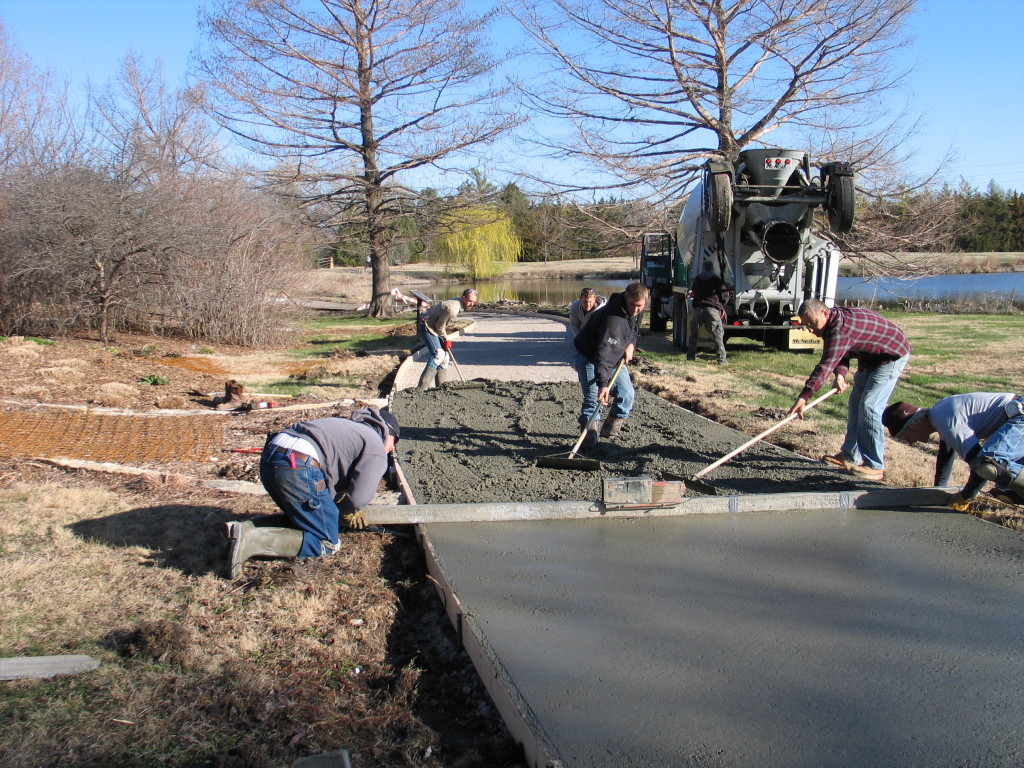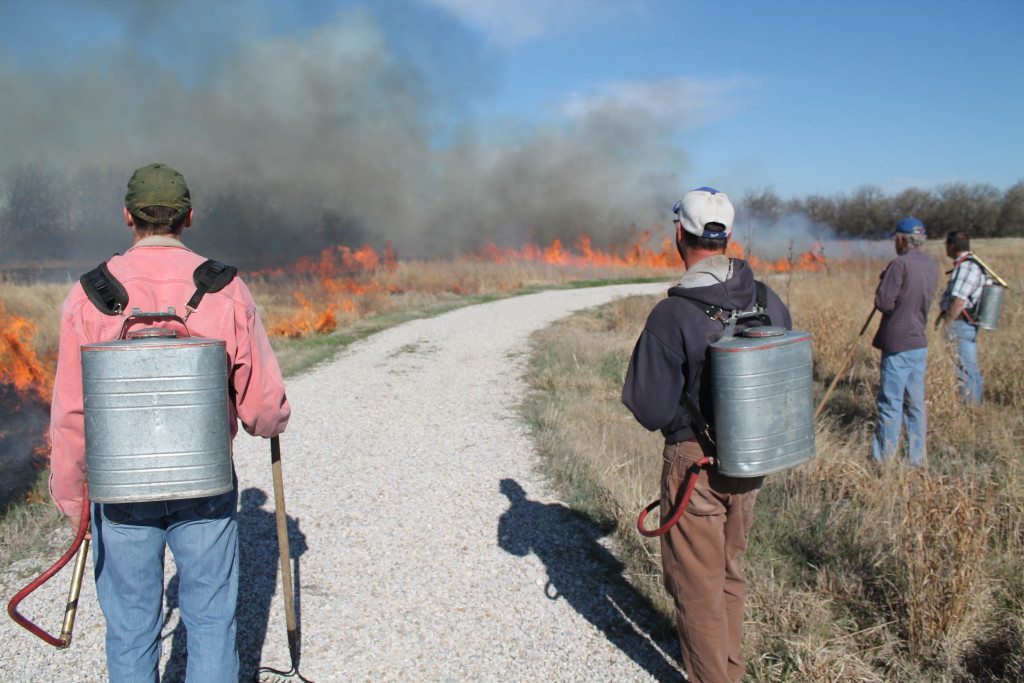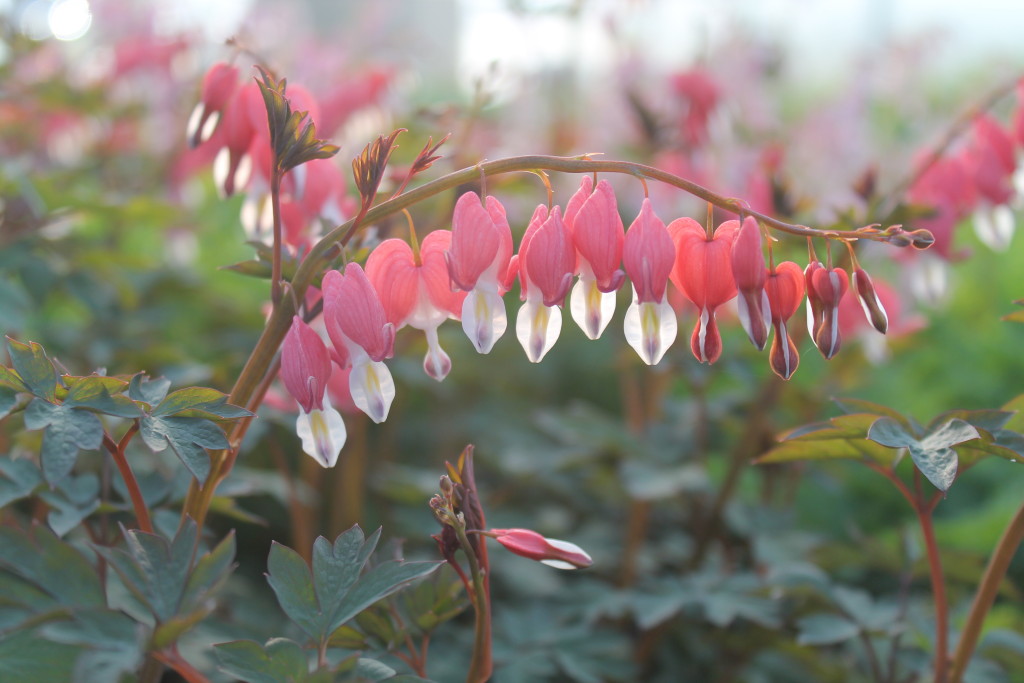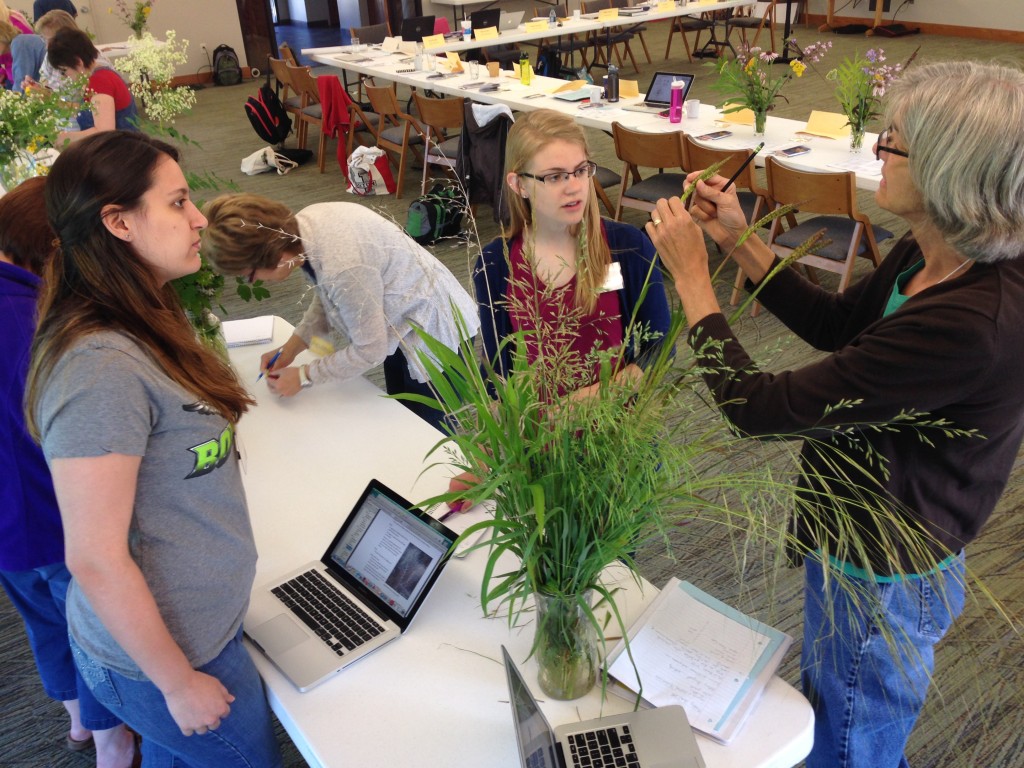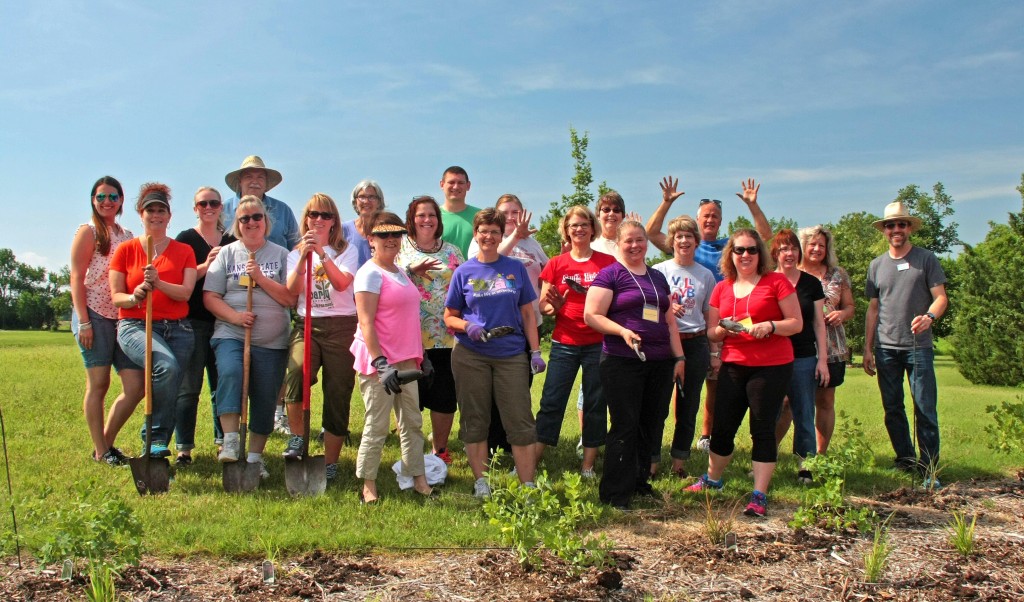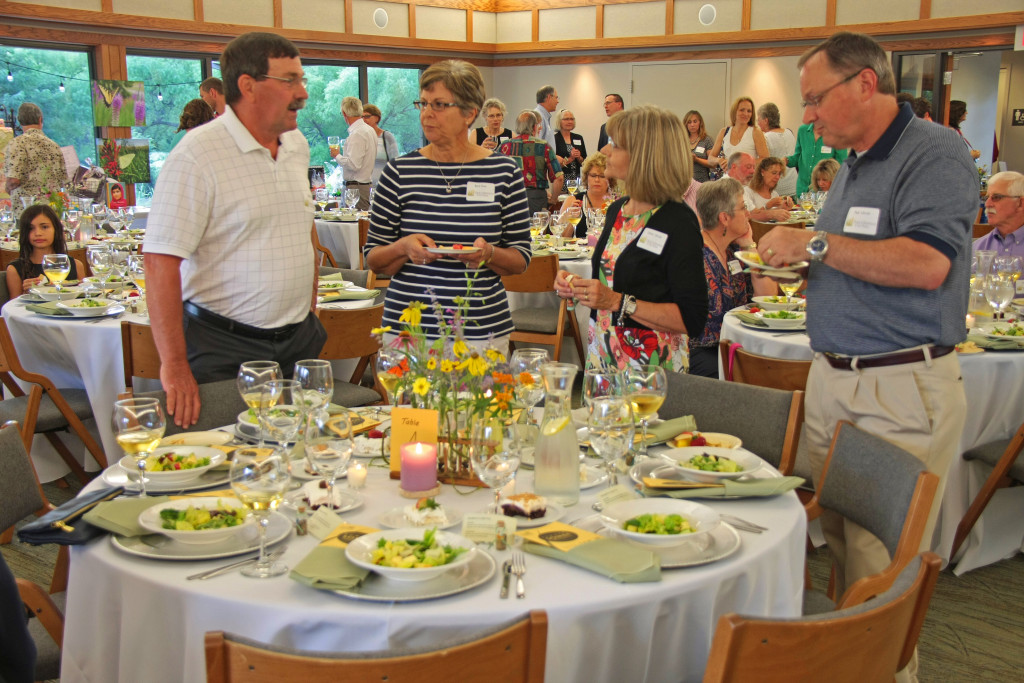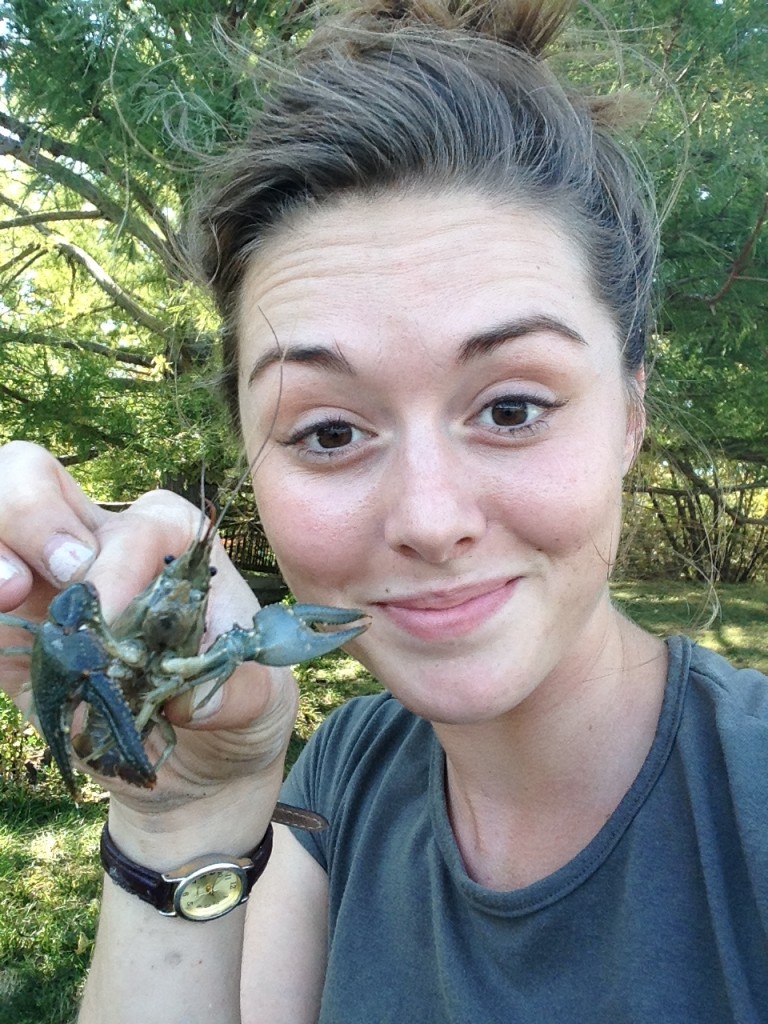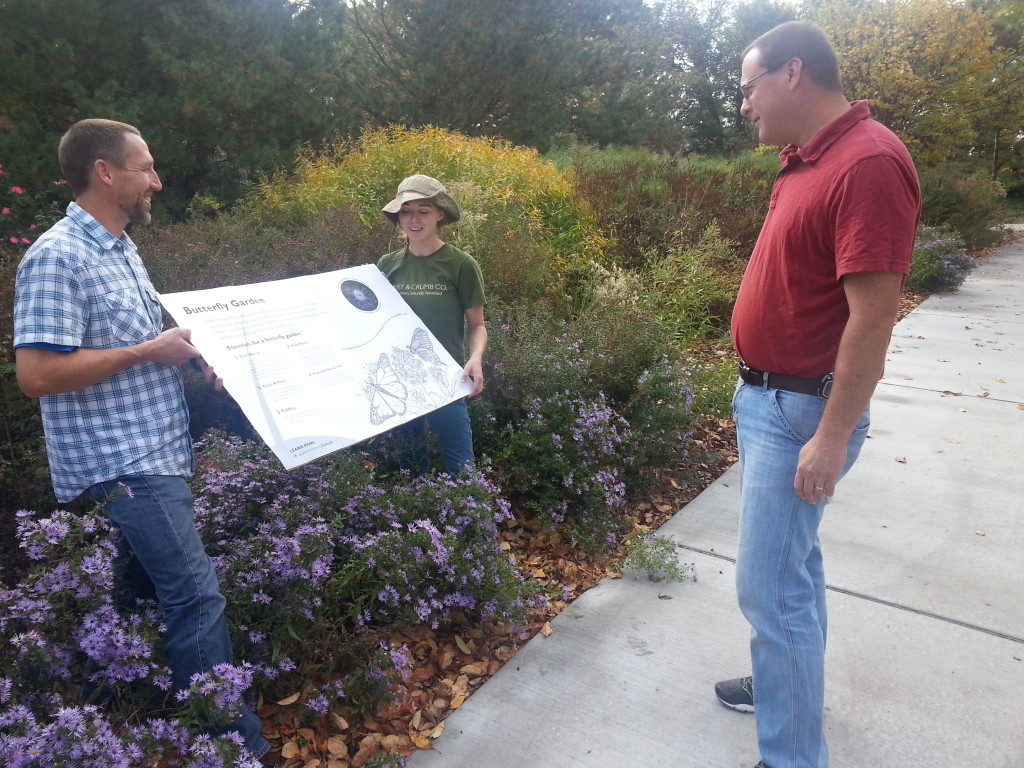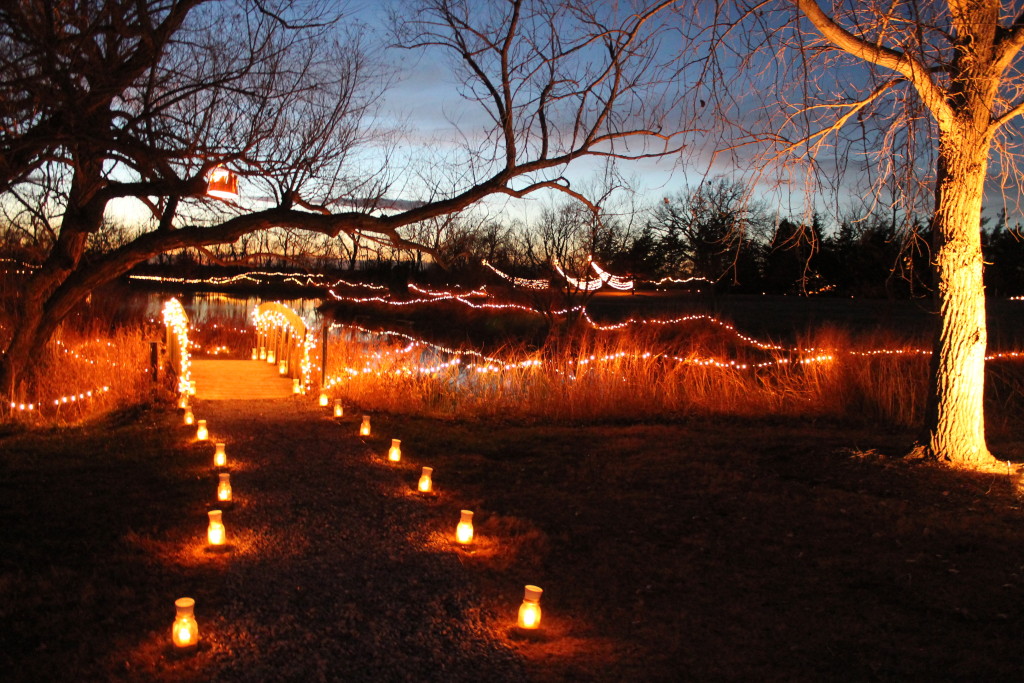For me, December is often a natural time to look back at what I’ve accomplished over the past year and what I am dreaming about doing in the coming year. It’s an annual practice, loosely based off of the “Daily Examen“. It’s not unlike something I saw on Pinterest – decorating a jar or vessel on New Year’s Eve that you then fill throughout the year with things that bring you joy. As a way of reflecting on the year, you can reopen and read your notes at the next New Year’s Eve gathering.
As we approach the end of this calendar year, I wanted to remind myself (and you!) of all the things we experienced here at the Dyck Arboretum in 2015 – what happened on the grounds, who we met, what we accomplished and how we fulfilled our mission.
Please enjoy this photo journey through the year.
Winter
With the calm cold of winter, the activities of wildlife move to the center of our attention. Dave Osborne sent us this photo of a cardinal searching for food and shelter at the arboretum last February.
Early Spring
Winter and early spring are often good seasons to make improvements to the hardscaping here at the arboretum. Here, a crew from Preferred Builders repaved a segment of the path near the birdwatch area.
Early spring is also the best time to focus our attention on prairie maintenance. Each year, we mow one section of the Prairie Window Project, we leave fallow a second section and we burn the third section. Brad Guhr, our prairie restoration expert, is meticulous in his planning and safe execution of these prescribed burns.
With the dreariness of late winter and early spring, I often flee to the greenhouse, where thousands of native and adaptable species grow in February, March and April. By late March, some species like false indigo and bleeding heart start to bloom, transforming the greenhouse into a colorful, ever-changing refuge from the outside.
Spring
We were sad to see the big weeping willow become diseased and weak over the past few years. This tree has been a fixture of the Dyck Arboretum landscape for three decades as the site of many wedding ceremonies and a fun place for children to play. Founder Evie Dyck also liked to sit on the hill above the willow for quiet reflection. Finally this past March, for the safety of our visitors, our grounds manager Brett tackled the big task of cutting it down.
If there is a single event that best shares our mission with our immediate community as well as further into the corners of south central Kansas, it is the FloraKansas Plant Sale. Every year, members and visitors purchase roughly 15,000 native and adaptable plants for their home and professional landscapes. Though one of the busiest times of the year, FloraKansas is my favorite part of what we do here at the Dyck Arboretum. It has been a joy for us to see the enthusiasm for native plants in Kansas grow over the past few years!
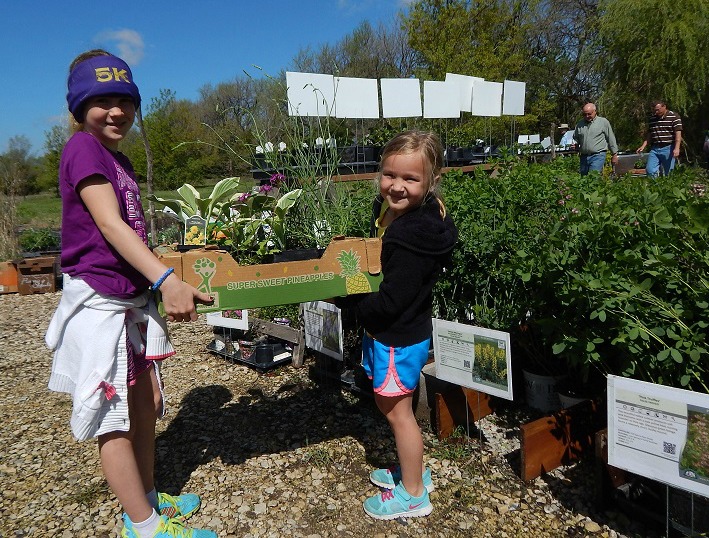
Two sisters from McPherson at the spring 2015 FloraKansas plant sale, excited to go plant their native and adaptable plants
Summer
To support the educational work of the arboretum, we also rent our facilities for families and businesses. Working with our wedding renters is a wonderful part of my job during the summer – we are always excited to see the ways in which families bring their own personal style to our garden venue, both indoors and outdoors.
Our most successful mission-driven educational program is the Earth Partnership for Schools institute for Kansas teachers. The week-long summer institute in June has been praised by its past participants as one of the most fulfilling and impactful continuing education experience of their teaching career. Likewise, our staff and volunteers finish this week in early June with smiles on our faces and joy in our hearts – for the passion for education displayed by our Kansas teachers and for the opportunity to provide tools for them to pass this enthusiasm on to their students. If you haven’t heard about this program yet, learn more here!
Our annual Summer Soirée dinner and silent auction in June has grown to become a wonderful time of connecting with our members and supporters. This year’s program included music from the Tallgrass Express String Band and presentation by Michael Haddock, co-author of Kansas Wildflowers and Weeds, which was published in March 2015 by University of Kansas Press.
Fall
Autumn brought several big changes and large projects for the Arboretum staff. In late August, our new grounds manager/horticulturist Katie Schmidt came on board and promptly infused our offices and grounds with enthusiasm and whimsy. Here she is taking a selfie with her new friend, Crayfish.
During the late summer and fall, we also spent many hours developing content for ten new educational signs, which you can expect to see being installed around the grounds this winter. We are excited about the additional learning opportunities these signs will give our visitors.
A major highlight in September was witnessing an increased number of monarch butterflies during their migration through Kansas. On September 23, staff happened to be in the amphitheater when several hundred monarchs were taking cover from a light rain. The photo below, taken by Brad Guhr, even made it on the Wichita evening news!
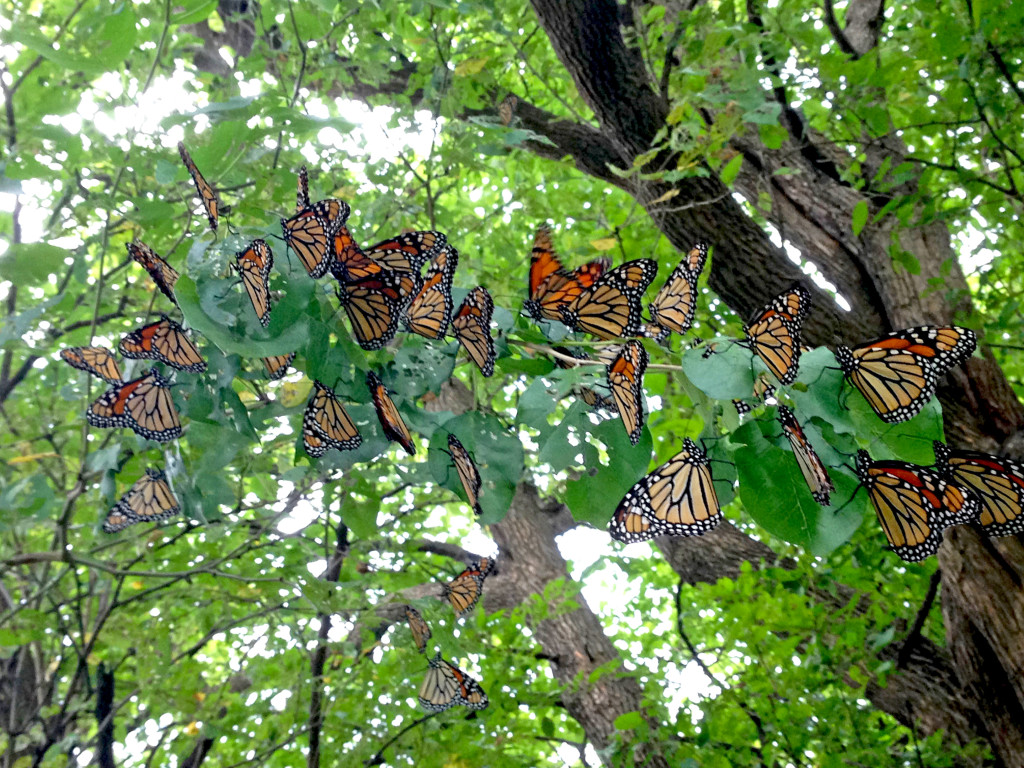
Approximately thirty monarchs rest on a single branch in the amphitheater during migration in September 2015.
Winter
Of course the capstone of our events calendar here at the arboretum is the Winter Luminary Walk. We thank all the volunteers, staff and board members who made this event happen this year! And we especially thank our members and visitors for supporting our mission through your participation in our programs and your presence here on our grounds throughout the year!
We hope you enjoyed 2015 as much as we did! We look forward to seeing what 2016 will bring!


